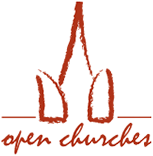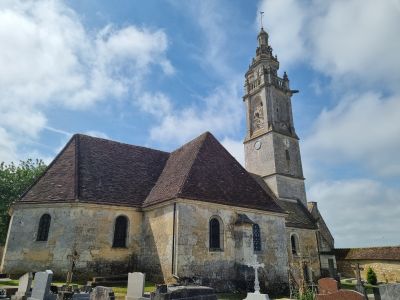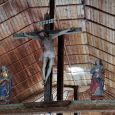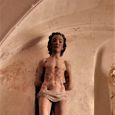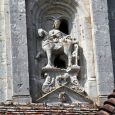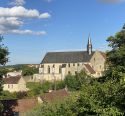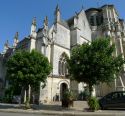Church | XVII | Classical | Catholic Church




Map
Opening hours
15 October - 15 April
Mon
Tue
Wed
Thu 13.00 - 16.00
Fri 13.00 - 16.00
Sat 13.00 - 16.00
Sun 13.00 - 16.00
16 April - 14 October
Mon 10.00 - 18.00
Tue 10.00 - 18.00
Wed 10.00 - 18.00
Thu 10.00 - 18.00
Fri 10.00 - 18.00
Sat 10.00 - 18.00
Sun 10.00 - 18.00
Religious offices
Description
Opposite the former courthouse, the only Romanesque-style civil building in the Perche region, stands the church of Saint-Martin, classified as a historic monument in 1905.
Originally Romanesque, the church belonged to the Abbey of Saint-Denis in Nogent-le-Rotrou. Today, it still dominates the town with its magnificent five-storey Renaissance bell tower. Its square base is topped by a watchtower and an octagonal lantern tower.
In the shape of a Latin cross, the church, most of which dates from the 16th century, comprises a nave extended by a choir and a three-sided apse. The side chapels are 17th-century additions. The south facade, with its trace of a Romanesque bay, has a doorway bearing the date 1636.
The interior of the church is as astonishing as it is remarkable. The baptismal font, the altarpieces and the side chapels are captivating in their authenticity and beauty, not to mention the admirable baldachin on the high altar, which captivates the visitor.
Translated with www.DeepL.com/Translator (free version)
Photos
Remarkable elements
Beam of Glory
It dates from the 15th century and supports the Christ on the Cross surrounded by the Virgin Mary and Saint John. It has been listed as a Historic Monument since 1966.
Translated with www.DeepL.com/Translator (free version)
Altarpiece
The high altar supports what is probably one of the first winged altarpieces in the Perche region in the 17th century, similar to those found near Mortagne-au-Perche. The altar is curved with a bas-relief of a monstrance in the centre. While the altar is simple, the tabernacle is surprising. It consists of 11 sections with gilded wooden statuettes of ten apostles separated by columns. Above, a triangular pediment, set on double columns, supports two seated angels surrounding Saint Martin in his bishop's robes. This pediment is supported by a baldachin, also known as a ciborium, on which the four Evangelists are painted.
The tabernacle depicts only ten apostles, including Saint Paul, who replaces Judas, precisely because Saint Matthew and Saint John already dominate the altarpiece, along with Saint Luke and Saint Mark. The altarpiece has been listed as a Historic Monument since 1966.
Translated with www.DeepL.com/Translator (free version)
Baptistery
The baptismal font, closed by an 18th-century oak door, was carved into the pillar of the tower. This niche is surmounted by a dove, the symbol of the Holy Spirit. The date 1772 is engraved beneath the dove.
Translated with www.DeepL.com/Translator (free version)
Statue of Saint Sebastian
Polychrome wooden statue dating from the 16th century, listed as a Historic Monument since 1976.
Translated with www.DeepL.com/Translator (free version)
Statue of the Charity of Saint Martin
On the east tower, in a niche, there is a stone carving of Saint Martin sharing his cloak with a poor man.
Translated with www.DeepL.com/Translator (free version)
Virgin and Child
A polychrome statue from the 16th century carved from a piece of walnut. It shows Nordic influences. The position of the infant Jesus, with his scissor-like legs and turned head, is unusual in Normandy.
It has been listed as a Historic Monument since 1966. It was restored in 2000, revealing six successive layers of paint. It was decided to keep the second layer.
Translated with www.DeepL.com/Translator (free version)
